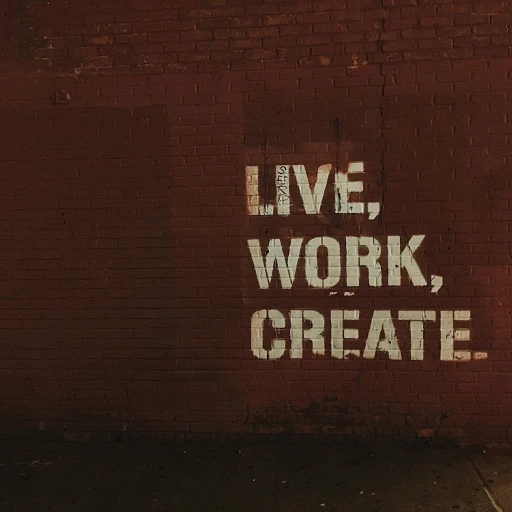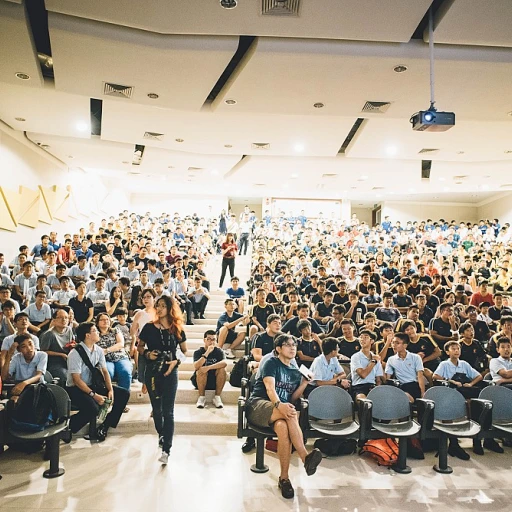
Understanding the Role of Employee Websites in Branding
Establishing a Foundation for Employee Website Appeal
An employee website serves as a digital communication hub, bridging the gap between the company and its employees. This foundational platform is vital in fostering engagement by offering a streamlined user experience that mirrors the company’s values and culture. The goal is to enhance the employee experience right from the intranet homepage to the last click, ensuring that every interaction on the site is meaningful and reflects the company's ethos.
When crafted effectively, an employee website can transform into a strategic tool for employer branding, reflecting the company’s commitment to transparency and inclusivity. Companies that understand this role recognize the need for a well-calibrated web design that doesn't just fulfill functional requirements but also captures the essence of the company culture through vivid colors, engaging team member profiles, and interactive content.
The rationale behind carefully designing these digital spaces goes beyond aesthetics. The structure and style aim to facilitate seamless accommodation of different user needs. By implementing best practices in intranet design and exploring intuitive website builder options, companies can create dynamic and engaging platforms that not only meet but exceed employee expectations. This type of responsive design, even when the size is small or the width varies, ensures accessibility and consistency in user experience across different devices.
In addition to style and functionality, the content becomes a pivotal part of the employee website. It’s crucial to offer articles, team updates, and interactive spaces that cater to diverse employee demographics. Drawing parallels from broad social media engagement techniques can further embolden this approach, channeling efforts into crafting content that resonates personally with each employee, thereby fortifying their connection to the company.
Through intentional design and strategic content curation, these websites do more than just inform. They establish a unified workforce aligned with company goals, ultimately driving forward the employer’s brand identity. For more insights on how top companies achieve successful branding through digital platforms, consider exploring notable examples in the industry.
Key Elements of Effective Employee Website Design
Essential Components for a Captivating Digital Workspace
Creating an engaging employee website is not just about aesthetic appeal. It's about weaving functionality with design to craft an impactful digital space. To achieve this, there are several key elements to consider:- User Experience (UX): Ensuring that the website is intuitive and user-friendly is paramount. The design should allow employees to easily navigate through the intranet without confusion.
- Responsive Design: Employees might access the site on various devices, so a design that adjusts seamlessly across different screen sizes is crucial. The site should maintain its usability whether on desktop or mobile.
- Visual Aesthetics: A well-thought-out color scheme and style can significantly impact user engagement. Consistent branding with company colors and logos helps to foster a sense of belonging among team members.
- Content Accessibility: The information presented on the intranet homepage and throughout the site must be easily accessible. Using clear text and proper headings enables quick information retrieval, improving the overall employee experience.
- Integrated Tools: Incorporating user-friendly website builders or drag-and-drop functionalities can ease navigation and customization. This also empowers team members to contribute to the site’s content, enhancing their sense of ownership and involvement.
Incorporating Company Culture into Web Design
Infusing Company Culture into Web Design
Incorporating company culture into your employee website design is crucial for creating an authentic and engaging experience. A well-crafted site not only reflects the values and ethos of your organization but also resonates with both current and prospective employees. Here are some strategies to effectively integrate company culture into your web design:
- Visual Storytelling: Use images and videos that showcase your team members in action. Highlight events, team-building activities, and everyday moments that capture the essence of your workplace. This visual content helps to create a narrative that aligns with your company’s mission and values.
- Consistent Branding: Ensure that the color scheme, fonts, and overall style of the website reflect your brand identity. Consistency in design elements across the intranet homepage and other sections of the site reinforces your brand’s message and makes the user experience more cohesive.
- Interactive Features: Utilize technology to create interactive experiences that engage users. Features like drag-and-drop interfaces, employee engagement tools, and social media integration can make the site more dynamic and reflective of a modern workplace.
- Personalized Content: Tailor content to meet the needs of different employee groups. For instance, create sections where team members can share their stories or achievements. This not only personalizes the experience but also fosters a sense of community.
- Employee Involvement: Involve employees in the design process. Gathering feedback from team members can provide insights into what they value most about the company culture and how it can be represented on the site. This collaborative approach can lead to a more authentic and engaging platform.
By focusing on these elements, you can create a website that not only serves as an effective communication tool but also as a vibrant representation of your company culture. For more insights on enhancing your employer branding, consider exploring innovative sourcing tools that can complement your web design efforts.
Utilizing Technology for Interactive Experiences
Integrating Technology for Engaging Employee Websites
In the realm of employee websites, leveraging technology can dramatically enhance the user experience and foster employee engagement. By using various website builder tools and advanced technologies, companies can craft an employee website that truly resonates with its team members.
Modern web design often employs drag and drop features, making it easier for companies to build an appealing and functional site. This method allows for flexibility in placing text, color, and interactive elements precisely where they best serve the company's branding strategy. Furthermore, adaptable website templates can expedite the design process, offering best practices that developers can incorporate seamlessly.
_A great intranet design can also play a pivotal role in connecting employees and centralizing resources._ Many businesses opt for a dedicated intranet homepage where team collaboration tools, company updates, and helpful resources are readily accessible. Through smart intranet strategies, a company intranet becomes a dynamic hub for information flow, boosting employee experience across the board.
Advanced interactive features such as real-time team meet options, social integration, and custom website examples can further enrich the web design. By adopting these technologies, businesses are not only able to enhance communication but also personalize the digital team member experience.
Lastly, incorporating responsive design principles ensures that the employee website adjusts intuitively to the size of the user's device, whether it be small or large. This adaptability guarantees that content and functionality remain accessible at any time and place, thus reinforcing a consistent and effective company brand message.
Measuring the Impact of Employee Website Design
Evaluating the Contribution to Employee Engagement
Measuring the impact of an employee website design is more than just tracking page views or clicks. To truly understand its effectiveness, focus on how well the site enhances employee engagement and the overall user experience. The following methods will guide you in assessing this crucial element of employer branding.- User Feedback: Gathering feedback from team members is fundamental. Encourage employees to share their thoughts about the intranet homepage and other parts of the company intranet. This feedback can provide valuable insights into how the design influences their daily work and interactions.
- Engagement Metrics: Monitor key metrics such as time spent on pages, interaction with interactive content, and participation in discussions. These metrics help reveal how engaged employees are. A well-designed website should prompt team members to engage more with the content and with each other.
- Surveys and Polls: Regular surveys and polls to assess employee satisfaction with the site can help to gauge its effectiveness. Consider questions about the intranet design, ease of use, color scheme, and text readability.
- Employee Experience Interviews: Conduct interviews with various employees to gain deeper insights into how the website supports or hinders their work. This qualitative data can be more revealing than quantitative metrics alone.
- Benchmarking with Best Practices: Compare your employee website with industry website examples. Identify best practices that can be integrated, like drag-and-drop features or responsive templates, to enhance the intranet design.













